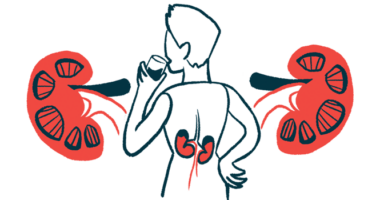Mutations in CFI and DGKE genes likely led to woman’s aHUS
The variants hadn't previously been associated with the disease

The case of a 69-year-old-woman with atypical hemolytic uremic syndrome (aHUS) who carried mutations in the CFI and the DGKE genes that hadn’t previously been associated with the disease, was described in a recent report.
The woman responded well to treatment with Soliris (eculizumab) and hemodialysis.
“There is currently no standard treatment for aHUS caused by DGKE or CFI mutations, but our case was successfully treated with eculizumab therapy,” the researchers wrote in “Novel Heterozygous Missense Variants in Diacylglycerol Kinase Epsilon and Complement Factor I: Potential Pathogenic Association With Atypical Hemolytic Uremic Syndrome,” which as published in Cureus.
aHUS is a rare disease marked by hemolytic anemia, or red blood cell destruction, low platelet counts, and kidney failure. It belongs to a larger group of disorders, called thrombotic microangiopathies (TMAs), where blood clots form in small blood vessels, leading to organ damage.
It’s been traditionally associated with mutations in genes that regulate the function of the complement system, a part of the immune system that’s overactive in people with the disease. Mutations in genes that encode non-complement-related proteins have also been associated with aHUS in rare cases, however.
New aHUS gene mutations
In this report, researchers in the U.S. describe the case of a 69-year-old woman with aHUS who carried two mutations in the CFI and the DGKE genes that had not been previously reported as being associated with the disease. The woman had a history of high blood pressure, heart arrythmia, and chronic obstructive pulmonary disease (COPD). She’d had joint replacement surgery that caused her to develop a persistent infection in her left knee. To resolve it, she had another surgery to have an antibiotic-impregnated cement spacer implanted into her knee.
The surgery was uncomplicated, but three days later she developed acute normocytic anemia, low platelet counts (thrombocytopenia), and acute kidney injury. People with normocytic anemia have a low number of red blood cells, but they retain their normal average size.
Further lab tests revealed schistocytes, or fragments of red blood cells, and elevated levels of lactate dehydrogenase — a marker of tissue damage — in the bloodstream.
The woman’s ADAMTS13 activity levels were at 74%, indicating she didn’t have a TMA called thrombocytopenic purpura (TTP), wherein the enzyme’s activity is severely reduced.
Lab findings and the woman’s clinical presentation suggested aHUS and she was started on Soliris, an approved aHUS therapy. Two days later, she began hemodialysis due to fluid accumulation and low urine output. Hemodialysis is used to remove excessive fluid and waste from the bloodstream when the kidneys can no longer do so.
Genetic testing revealed two mutations, one in the CFI gene, which had not been been previously reported, and the other in the DGKE gene.
The woman underwent weekly treatment with Soliris, delivered at 900 mg, for four weeks. She continued maintenance Soliris treatment for six months at a dose of 1,200 mg every two weeks. Her kidney function normalized after 24 days and she no longer required hemodialysis.
“We believe that [genetic] variants … in this case potentially played a pathogenic [disease-causing] role, and should be further examined,” the researchers wrote.







